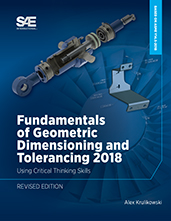Technical Paper
Warrior Injury Assessment Manikin Oblique Vertical Testing
2018-11-12
SC18-22-0008
Abstract - The Warrior Injury Assessment Manikin (WIAMan) was developed to assess injury in Live Fire Test and Evaluation (LFTE) and laboratory development tests of vehicles and vehicle technologies subjected to underbody blast (UBB) loading. While UBB events impart primarily vertical loading, the occupant location in the vehicle relative to the blast can result in some inherent non-vertical, or off-axis loading. In this study, the WIAMan Technology Demonstrator (TD) was subjected to 18 tests with a 350g, 5-ms time duration drop tower pulse using an original equipment manufacturer (OEM) energy attenuating seat in four conditions: purely vertical, 15° forward tilt, 15° rearward tilt, and 15° lateral tilt to simulate the partly off-axis loading of an UBB event. The WIAMan TD showed no signs of damage upon inspection. Time history data indicates the magnitude, curve shape, and timing of the response data were sensitive to the off-axis loading in the lower extremity, pelvis, and spine.




